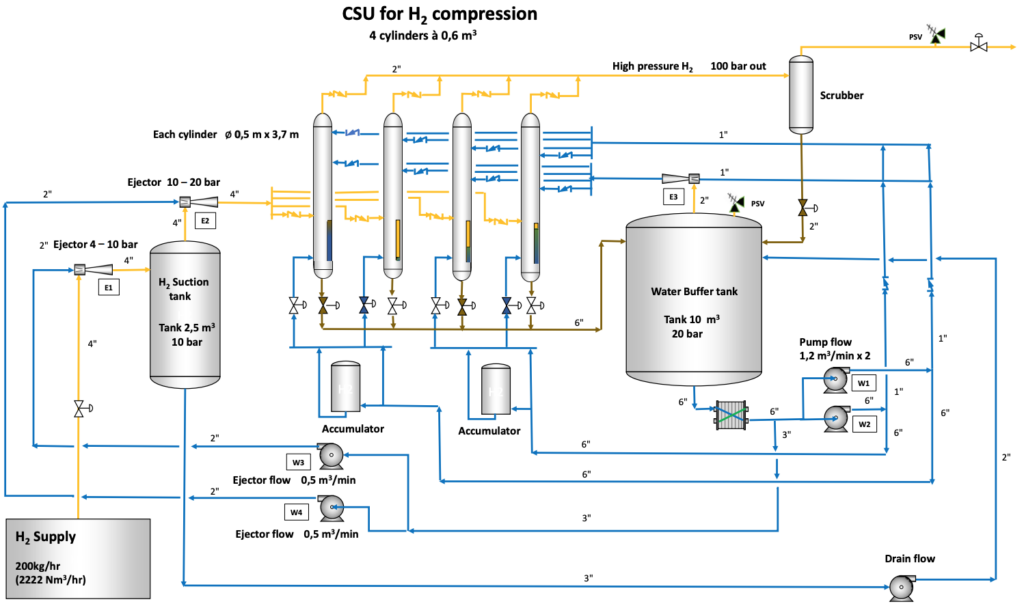Hydrogen
Compact Gas Compression and Separation Unit (CSU) applied for compression of hydrogen
Use of hydrogen as fuel for transport or for combustion heating in buildings and industry, are applications where hydrogen is used as energy. Hydrogen production will be predominantly done by water electrolysis or reforming of natural gas. Transport and storage of hydrogen requires that the hydrogen gas is compressed to high pressures, or that the hydrogen is liquefied or synthesized to ammonia or a liquid hydrogen carrier. Compression of hydrogen with use of CSU technology can be a game changer.
Conventional principles for compression of hydrogen
Large flowrates of hydrocarbon gas are typically compressed through several stages of centrifugal compressors with intercoolers and scrubbers to knock out liquid between the stages.
Such compressors cannot be used for pure hydrogen for high pressure ratio due to the low molecule weight, only 12,5% of the weight of methane.
Rotary screw compressors can be used to moderate pressures. However, they require large silencers on suction and discharge side as well as having challenges with internal clearances and consequently efficiency.
Reciprocating compressors are suitable at moderate flowrates. They become very large by high flowrates.
Can be used for hydrogen but they become very large by low inlet pressure, and piston seals have limited durability causing increased leakage. Suction coolers and scrubbers are required for each stage.
Sustainability for H2 production
- Wind and solar power need ability to store produced energy when demand is low
- Construction of large battery farms may suffer from shortage of crucial materials like lithium and others
- Production of hydrogen from electrolysis or reforming of natural gas will need gas compression for appropriate storage and transport
- Today’s principles for gas compression suffers from significant weaknesses when compressing H2.
- Use of the CSU technology is probably the most safe and favourable way to achieve efficient compression, storage and transport of large quantities of hydrogen
Advantages
- Most favorable way of compressing large quantities of hydrogen to high pressure >100 bar
- Superior Process Safety – no dynamic mechanical seals in gas service
- Lower CAPEX, weight and footprint
- Cost and weight savings
- Lower OPEX
- Lower maintenance costs
- Less equipment
- Less demanding dynamic seals
(water service) - Targeting isothermal compression
- Compact, low foot print, integration friendly
- Exclusion of coolers and scrubbers at individual compressor stages

